Affiliate links on Android Authority may earn us a commission. Learn more.
Google Bard vs Bing Chat: What’s the difference and which one to use?
Published onAugust 30, 2023
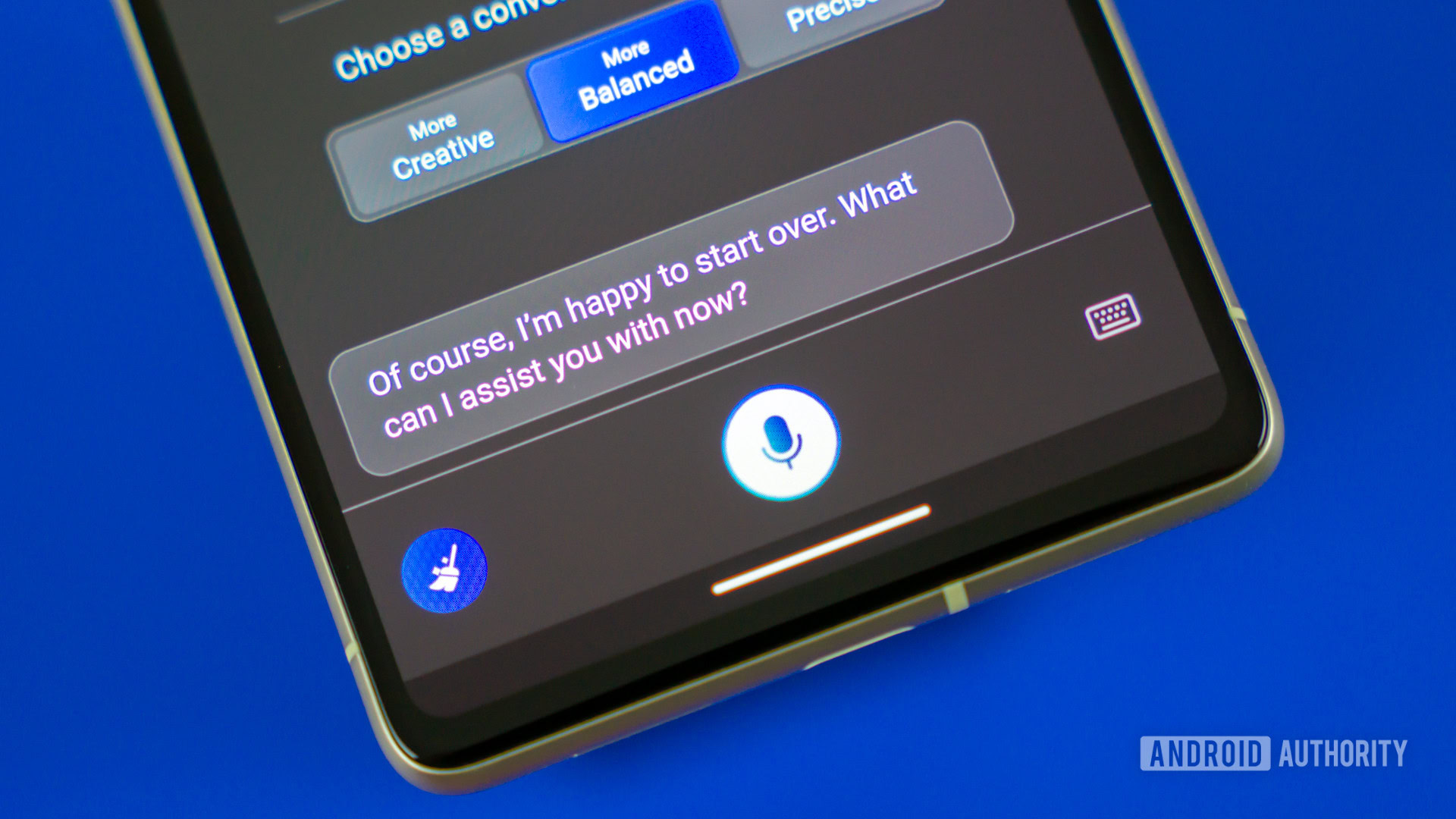
In an unexpected turn of events, Microsoft beat Google to the punch in the AI chatbot race when it announced Bing Chat in early 2023. Even though Google teased its large language models several years prior, it hadn’t revealed plans for a public-facing product yet. But the search giant took little time to respond after Microsoft’s announcement and its Bard AI chatbot now competes directly vs Bing Chat.
Neither chatbot has escaped controversy, with Bard making a critical error during its debutant demo. Bing Chat, meanwhile, appeared confrontational to some users in its early days. Still, that doesn’t take away from their impressive capabilities and potential upgrade over ChatGPT. But with two similar choices available, you may be wondering — does one work better than the other? Let’s break down the differences between Google Bard and Bing Chat.
If you’re in a hurry, here’s a quick summary of how Google Bard differs vs Bing Chat:
- Bing Chat relies on OpenAI’s GPT-4 language model — a more advanced version of ChatGPT. Meanwhile, Bard uses Google’s own language model called PaLM 2.
- Bard will sometimes offer three different drafts to choose from. That said, you can manually ask Bing Chat to try again if you’re not happy with a response.
- You can create AI-generated images using Bing Chat. Currently, Google’s chatbot can only fetch images from the internet.
- Bing Chat offers three chat modes, namely Creative, Balanced, and Precise. Bard doesn’t have this kind of fine-tuning at the moment.
- Bing Chat delivers longer responses in its Creative mode, while Bard seems better suited to quickly answer questions.
- Microsoft has brought Bing Chat to more platforms, including mobile apps, the Edge web browser, and Skype group chats.
- Both chatbots now support all major languages, but Bing Chat may fare better for obscure dialects and programming languages.
Keep reading to learn more about the differences between Bard and Bing Chat.
Google Bard vs Bing Chat: Knowledge and accuracy
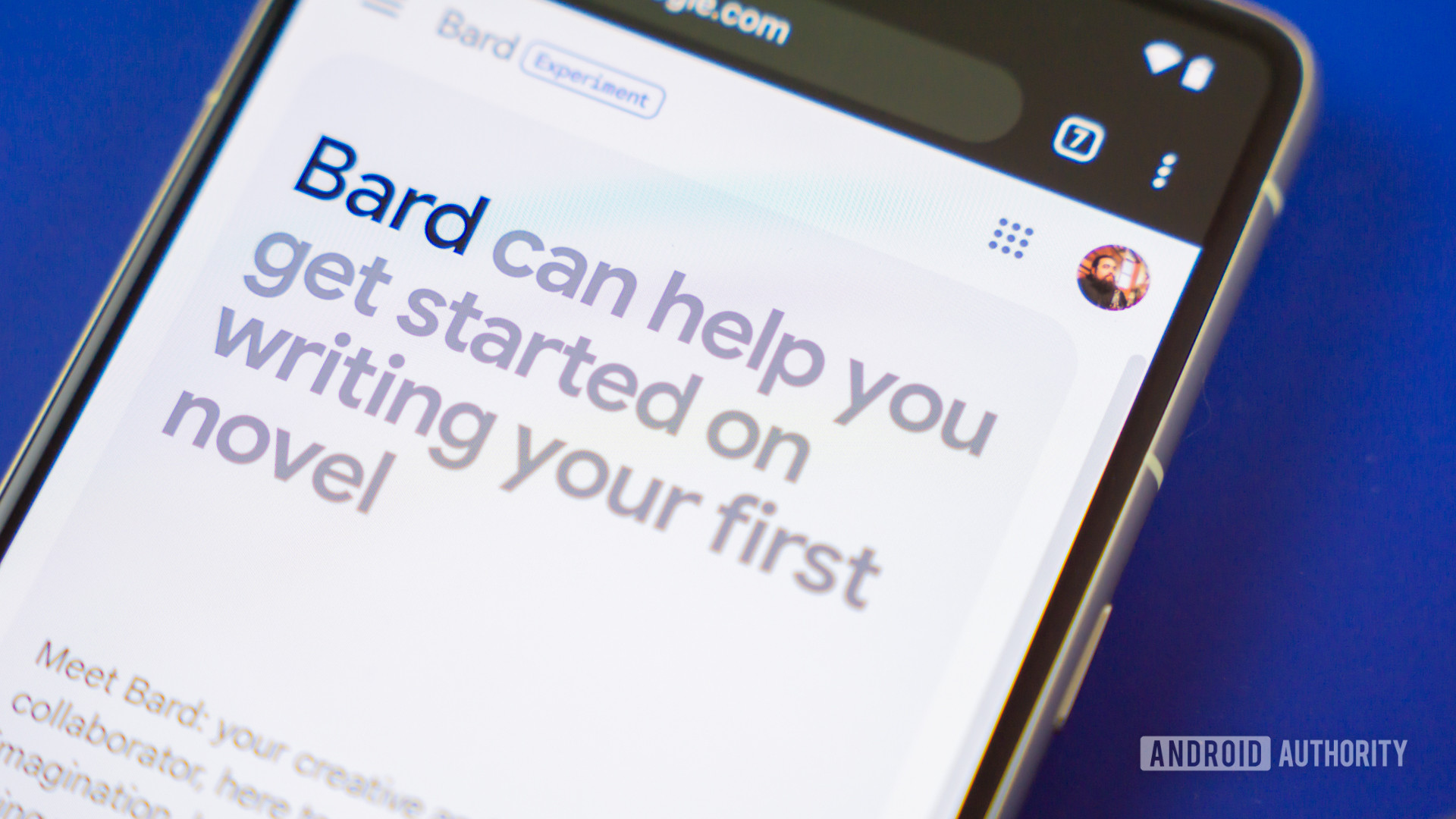
Unlike ChatGPT, which has a knowledge cut-off date of September 2021, both Google Bard and Bing Chat can search the internet for the latest information. However, that doesn’t mean they’re equally capable. More on that in a bit.
For now, know that Bing Chat offers three different conversation styles or modes to choose from. Creative mode, for instance, allows the chatbot to spin up its imagination. This makes it perfect for generating essays, poems, and stories. The other modes, Balanced and Precise force Bing Chat to stick to the facts and end responses as quickly as possible.
But before we talk any more about their technical differences, let’s take a look at a few real-world comparisons of Google Bard vs Bing Chat.
A creative task
In this first example, I asked Bard and Bing Chat to list some highlights of Steve Jobs’ life for a potential biography. I figured this would be a good way to ease into writing long-form content. Much to my surprise, however, Google’s chatbot simply refused to comply until I re-worded my request. Meanwhile, Bing Chat didn’t hesitate and generated a fairly detailed summary on the first attempt itself.
Next, I asked both chatbots to expand on the first section of the biography. Once again, Bard messed up and responded by introducing itself instead. When I typed the same prompt into Bing Chat, it understood my intent just fine and generated the section perfectly. I’m not sure why Bard failed twice, but let’s move on for now.
A factual task
For our next example, I asked the chatbots to compare two 2023 smartphones: the Galaxy S23 Ultra and the OnePlus 11. Bard responded with a neat comparison table, while Bing Chat delivered three short paragraphs. Of note, Google’s chatbot didn’t include a single citation while Bard mentioned its sources throughout the text and linked them at the end.
As for the actual content, Bard incorrectly stated that the OnePlus 11 uses the last-gen Snapdragon 8 Gen 1 chip. It also claimed that the phone shipped with Android 12 instead of Android 13. In other words: two glaring errors. Its response also didn’t include any mention of Samsung’s S-Pen.
Bard made two glaring mistakes while responding to a fairly straightforward question.
Bing Chat, on the other hand, didn’t provide its response in an easily-digestible format. Despite their short length, the three paragraphs weren’t as convenient to read as a table. However, it didn’t get anything wrong and it also pointed out the lack of a stylus on the OnePlus 11.
I gave Bard one final chance at redemption by asking if it was sure about the processor. And thankfully, it came to its senses and acknowledged that the OnePlus 11 includes a newer chip.
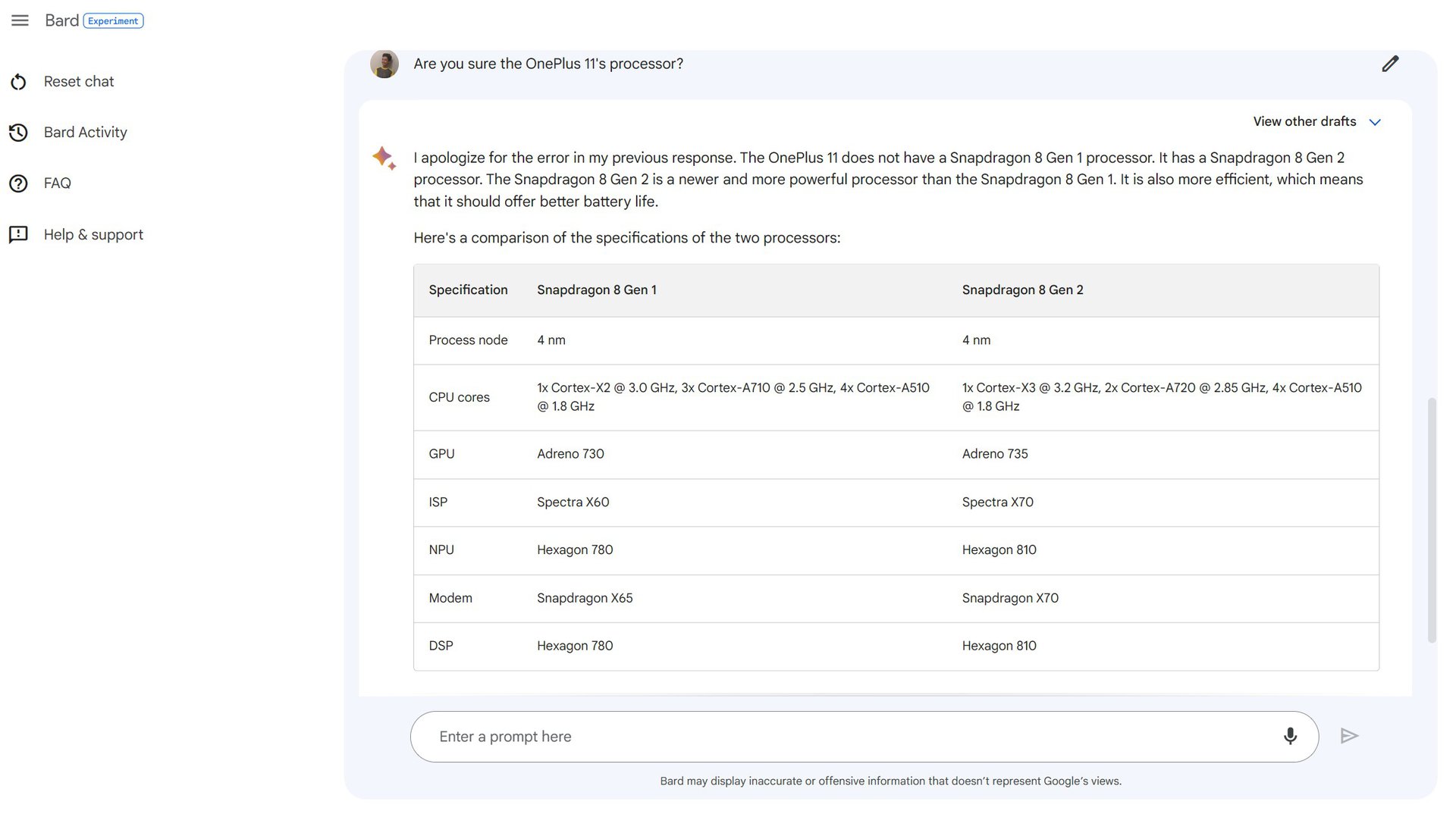
From these examples alone, it’s clear that Bing Chat has the lead in terms of accuracy even though both chatbots can search the wider internet.
A research task
For our final example, let’s ask how long the Galaxy S23 Ultra takes to charge from 0-100. There are two ways to answer this question: you can take Samsung’s marketing at face value or consult reviews and testing data.
Bing Chat opted to read our coverage and correctly stated that it takes around 57 minutes to fully charge a Galaxy S23 Ultra. It also linked back to the article for context. Bard, meanwhile, gave the same answer but didn’t provide a source. And when asked to cite its sources, Google’s chatbot simply said that it is “outside of my capabilities”.
Why is Google Bard so different from Bing Chat?
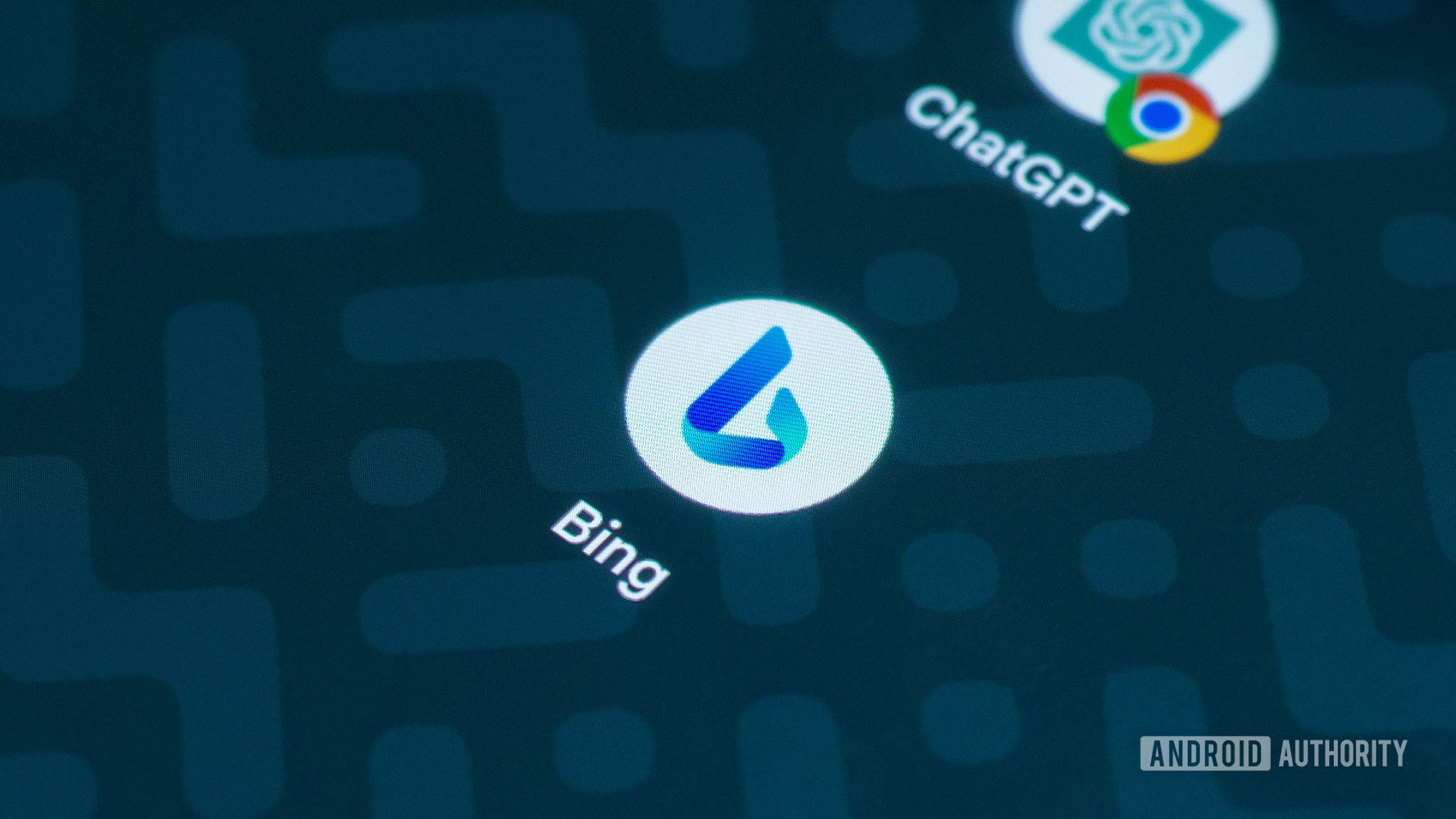
While both chatbots may seem similar at first glance, they’re actually based on completely different platforms under the hood.
For instance, Bing Chat relies on OpenAI’s GPT-4 language model. That’s technically a more advanced model than ChatGPT, thanks to Microsoft’s $10 billion investment in OpenAI. Google initially empowered Bard with LaMDA instead, a language model the company developed in-house. Since May 2023, however, Bard has started using the newer and supposedly more capable PaLM 2 model. As for how they stack up against each other, OpenAI’s prior GPT-3 model boasted 175 billion parameters while Google’s LaMDA stood at 137 billion in early 2022.
Google's language model hasn't been tested by the public until now.
It’s worth noting you can’t compare large language models based on their parameters alone as the quality of training also matters. That said, Bing Chat and GPT-4 have a clear lead on paper and that may explain why Google has imposed many restrictions on Bard.
Google Bard vs Bing Chat: Languages, image generation, coding
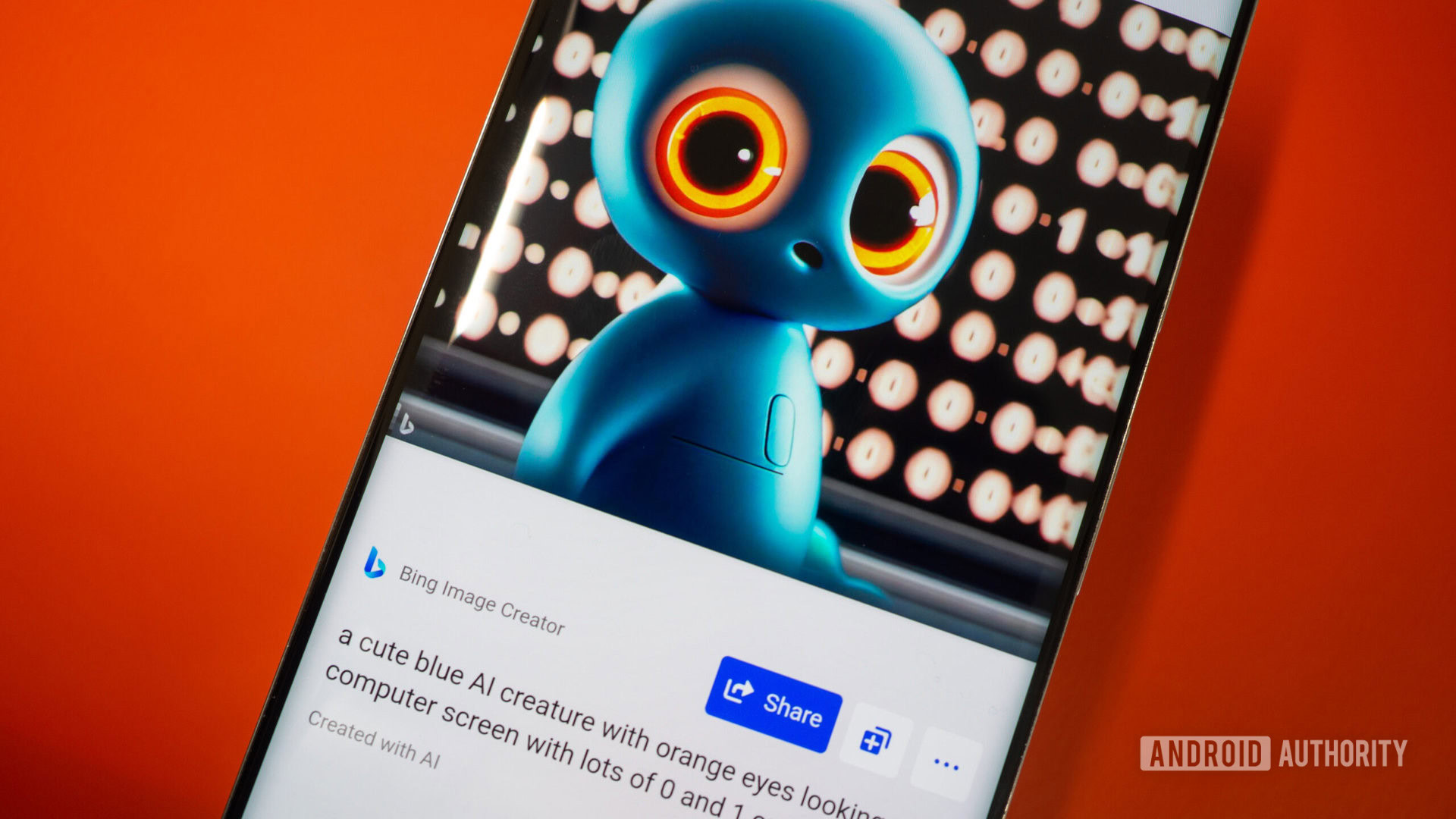
In terms of language support, it’s tough to award a winner. Bard only supported English at one point, but has now gained the ability to understand and reply in over 40 languages. Bing Chat, meanwhile, doesn’t have a limit and can also understand some fringe dialects.
Bing Chat also has one more advantage over Bard: it can generate images. It’s not as capable as Midjourney, an AI tool dedicated to this task, but it still does a good enough job. Here’s an example:
As for coding, I’ve found that Bard can only put together rudimentary programs. Bing Chat does fare a lot better most of the time in my subjective testing, likely due to differences in the underlying language models. That said, both chatbots can sometimes feel limited for programming due to their short replies. As we pointed out in our post on ChatGPT vs Bing Chat, the former’s character limit is a lot more generous.
Google Bard vs Bing Chat: How and where to use them?
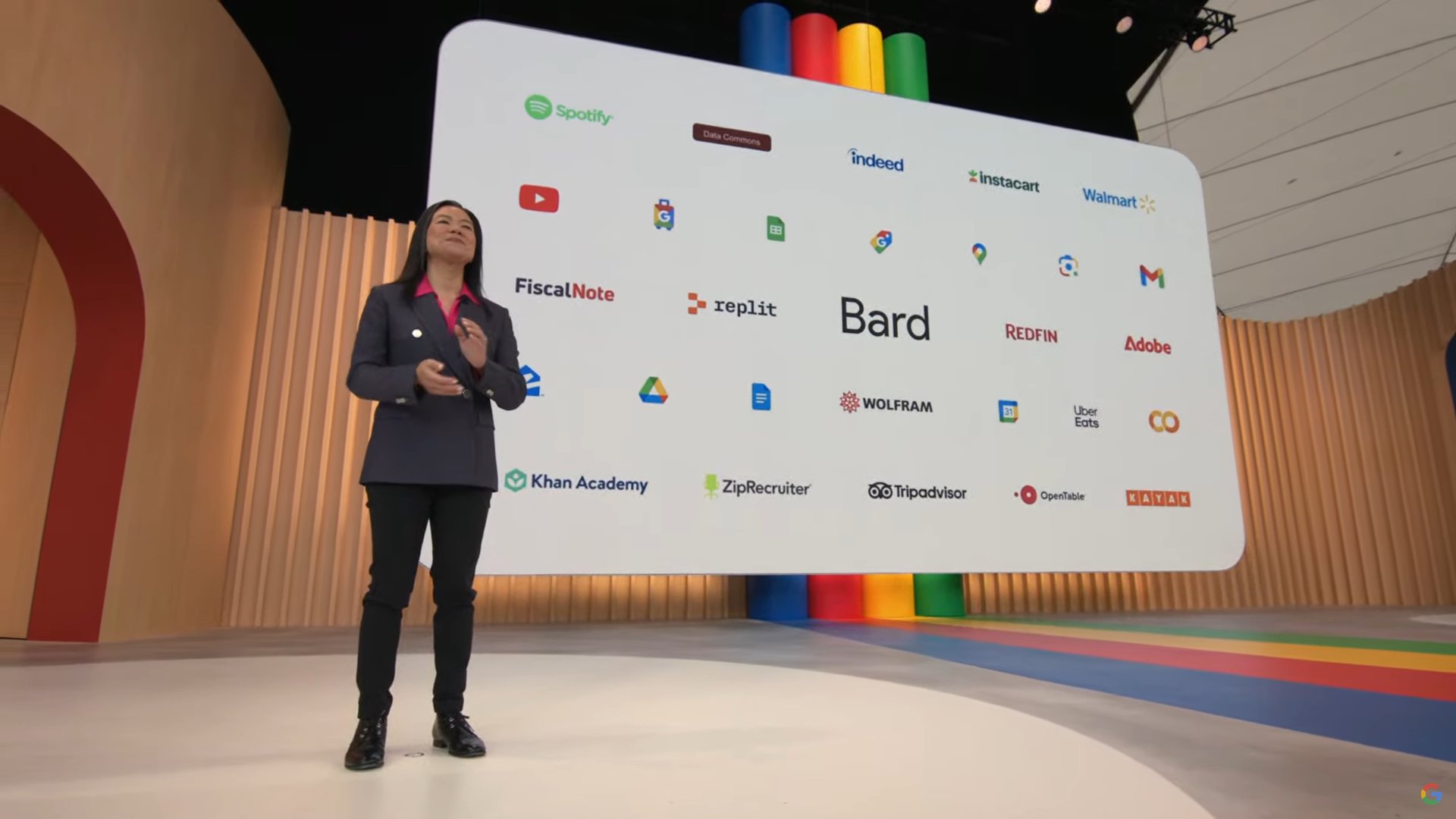
Google and Microsoft opted to limit their chatbots’ initial availability back when they launched, but have since relented. Anyone can now use Bard and Bing Chat for free, all you need is a Google or Microsoft account. The chatbots are also available worldwide so you don’t have to worry about
Bing Chat is available in apps and platforms than Bard at the moment.
Bing Chat does come with one advantage, though. You can use it on a variety of platforms, including the web, mobile, Edge web browser, and even Skype group chats. It also supports two-way voice conversations via the Bing mobile app, which means you can use it hands-free. This brings Bing Chat a lot closer to Google Assistant, minus smart home control.
For now, Google hasn’t been very ambitious with advertising Bard to the general public. You can also only access it via a website, much like the early days of ChatGPT. So if availability and convenience matters to you, Microsoft may surprisingly have the upper hand.